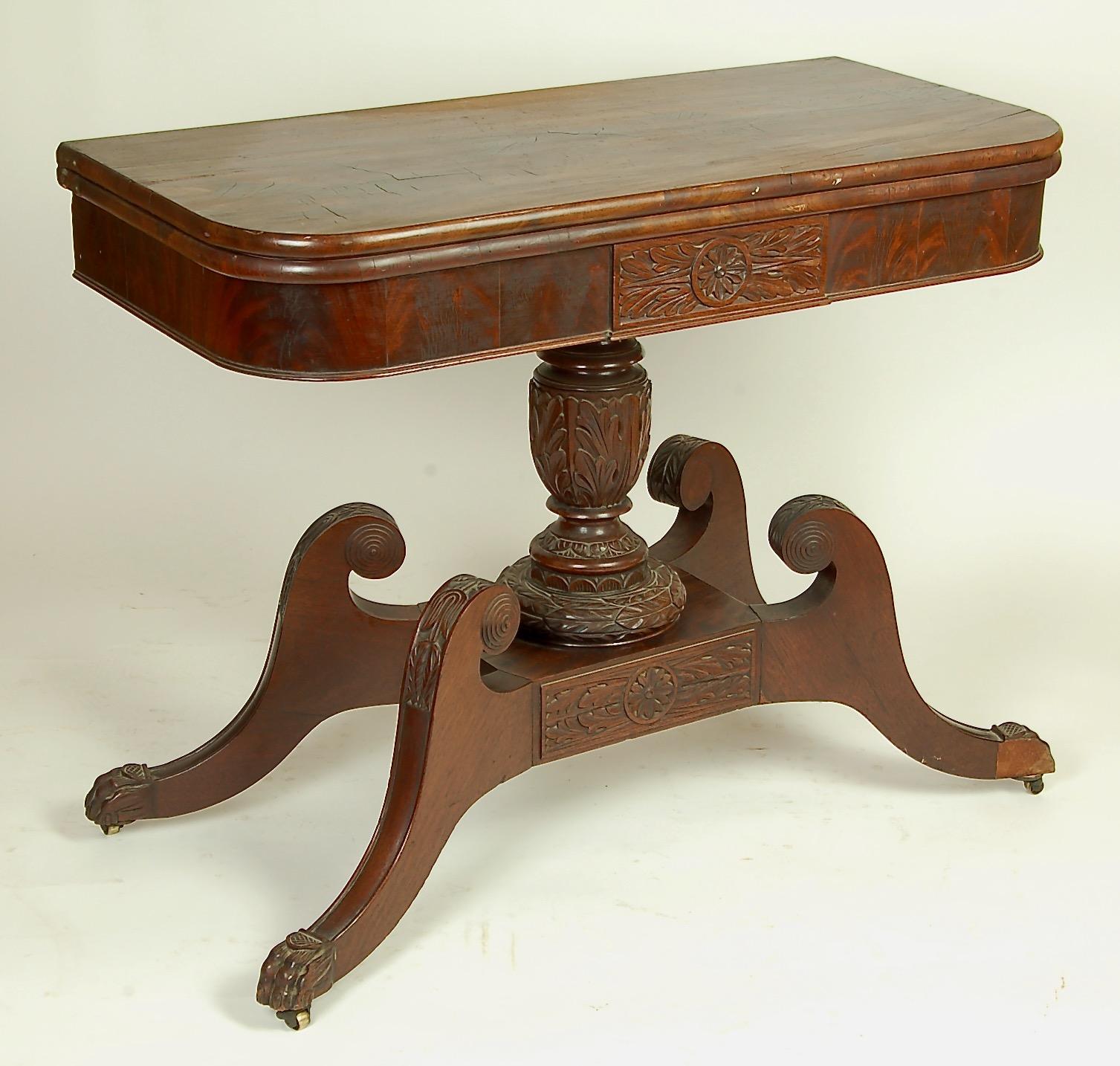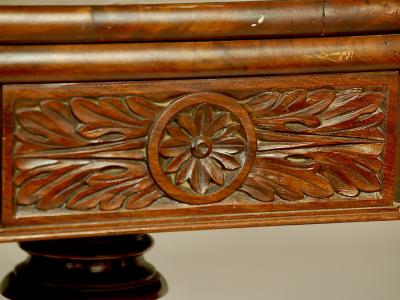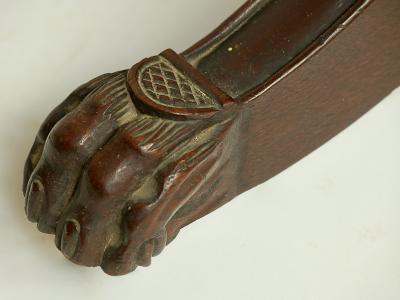Card table
Philadelphia and environs
1875-1910
Measurements
29 in x 36-1/4 in x 18 in
Materials
Mahogany; tulip poplar (cross piece), white pine (secondary woods)
Credit Line
Historic Odessa Foundation, The David Wilson Mansion, Inc.
Accession Number
1971.638
Condition Notes
Most of the laminated toes at the sides of the feet are missing.
Provenance
Ex coll. Mrs. E. Tatnall (Mary Corbit) Warner
Comments
This D-shaped card table has a folding top that swivels ninety degrees on an off-center axis so that the opened top rests centered on the table frame. Each of the top leaves has figured mahogany veneers on both sides of what may be a mahogany core of a lower-grade board. Alternatively, the core may be pine or a similar wood with a mahogany strip along the back edge. The front and side edges of each leaf have applied mahogany “bullnose” molding strips. The central pillar is tenoned into a cross piece and into a platform base supported by four out-curving “swept” legs ending in carved feet and standing on brass casters.
At first glance, the table resembles classical revival, or “Empire,” tables of the 1820s, but this example dates from much later in the 19th century, representing the long tenure of this particular style. All of the carved details differ from those of the earlier period. Some are in different locations, the carved ornament differs, and there is simply more carving on the table than normal. For example, the paw feet have diapered half-rounds on their tops. The tops of the legs have a panel with a stylized tulip worked into it, a motif that recalls some New England 17th-century carving or Pennsylvania-German decorations. The acanthus panels on the platform and on the table frame have unusual central encircled rosettes and the leaf ends are flat, simple, and poorly executed in comparison to earlier Empire foliage. The carving around the pillar involves several more bands of carved motifs than in the earlier period. In addition to carving, the angled legs applied to the platform base are too large, and they intersect the platform at too shallow an angle. Other construction details do not correspond to earlier tables of this type.




